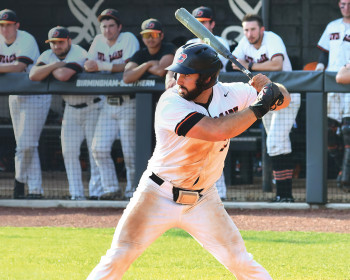Around the World in 50 Years
Open gallery

The Lewis & Clark overseas study program celebrates its 50th year.
by Ellisa Valo
The year was 1962, and the United States had just landed its first rocket on the moon; Rachel Carson’s Silent Spring had sparked a new environmental movement; the civil rights movement was gaining ground; and a budding feminist revolution was in the wind. Bob Dylan had just released his first album, and the times were definitely changing.
At Lewis & Clark, Jack Howard was in the second year of his presidency. Reflecting on that transformative year, he says, “There was nothing in the world but change.” The world, as he saw it, “was growing increasingly interdependent—politically, economically, and culturally.” If Lewis & Clark students were to thrive in this changing world, he believed, they would need to know how to live and work with other people and cultures. “We were still a provincial country,” says Jack. “We needed to spread our wings and get out in the world.”
In 1962–63, the first year of Lewis & Clark’s overseas study program, 135 students traveled to 6 destinations.
And so, in the fall of 1962, the college launched its overseas study program, sending a handful of students—including several first-year students—to Chile, England, Japan, Mexico, and Peru. “The few overseas study programs that existed at the time were all at the graduate level,” says Howard. “The idea of sending young undergraduates overseas was unheard of. But we believed that if you sent students abroad early in their education, they would have time, when they got back, to build on that experience. And it worked very well for us.”
Following their travels, the administration noted, students returned “with increased maturity and intellectual independence, greater motivation for learning, and more sharply questioning and critical attitudes.” They brought their experiences back with them, integrating them into symposia, senior theses, and increased involvement in volunteerism. Faculty members who had served as program leaders incorporated their experiences into the classroom, as well, translating them into new ideas for curricula.
During 2011–12, some 300 students will have studied overseas or off campus in nearly 20 locations.
As the reputation of the program grew, it achieved some notable firsts. In 1965, it became the first U.S. program to be invited to Hiroshima since the 1945 bombing, and the first to send students to study behind the Iron Curtain. Through the years, Lewis & Clark students continued to bear witness to history. After President Nixon’s historic visit to China in 1972, Lewis & Clark was the first undergraduate college to initiate an exchange program with a Chinese university. When the Berlin Wall fell in 1989, Lewis & Clark students were there.
Today, the overseas study program is one of the most distinguishing features of the college, attracting students from—and sending students to—every corner of the globe. More than 60 percent of Lewis & Clark students end up studying abroad, often in countries outside of Western Europe.
Overall, since the overseas program began, more than 11,000 students and 260 faculty members have participated in nearly 800 programs in 67 countries or geographic areas. Some 65 percent of Lewis & Clark’s programs go to countries outside Western Europe.
“Jack’s vision may have been ahead of its time,” says Larry Meyers, director of overseas and off-campus programs for the last 30 years. “With the globalization that has taken place, it’s more relevant today than it was even then.”
Much has changed in the last 50 years, says Meyers, but one thing has remained constant: “Our commitment to helping young people understand that there are other ways of being and thinking, and that there are ethical considerations to how you interact, both with your environment and with other cultures. If our students walk away with that, it’s the most crucial thing we can teach them in an international education.”
Since 1962, more than 11,000 students have participated in the Lewis & Clark overseas study program.
As the Lewis & Clark overseas study program celebrates its 50th year, six alumni reflect on their life-changing journeys.
Amy Lillis BA ’04
Overseas Program: India, 2001
Cynthia Owens BS ’80
Overseas Program: Israel, 1980
Jodi Eichelberger BA ’93
Overseas Program: London, 1992
Paul Jorgensen BA ’85
Overseas Program: Denmark/Greenland, 1983
Ross Mouer BA ’66
Overseas Program: Japan, 1962
Theron Morgan-Brown BA ’00
Overseas Program: East Africa, 1998
Share Your Overseas Study Experience
How were you changed by your overseas study experience? How did it influence your life choices? We’d like to hear from alumni and faculty leaders—simply e-mail your comments to chron@lclark.edu. Depending on the volume of responses, we’ll feature selected letters in a future issue of either the print or online Chronicle.
Ellisa Valo writes to support her travel habit. She has visited 17 countries so far.
More L&C Magazine Stories
Lewis & Clark Magazine is located in McAfee on the Undergraduate Campus.
MSC: 19
email magazine@lclark.edu
voice 503-768-7970
fax 503-768-7969
The L&C Magazine staff welcomes letters and emails from readers about topics covered in the magazine. Correspondence must include your name and location and may be edited.
Lewis & Clark Magazine
Lewis & Clark
615 S. Palatine Hill Road MSC 19
Portland OR 97219

